Spring lawn care tips: 7 steps to revive your turf in time for warmer weather
These top spring lawn care tips will help you get your lushest grass yet through scarifying, mowing, feeding, and more


Once the coldest months are behind us, it's time to start thinking about spring lawn care tips. After all, it won't be long before everything bursts back into life after the dormancy period of winter – your turf included (with the right care, that is).
For many of us, a luscious lawn is one of the most important features of the garden once the temperature warms. We all want picture-perfect grass that's a beautiful shade of green – lovely for lounging on, running across barefoot, or simply admiring from the patio. We certainly don't want an eyesore of shabby, moss-filled, half-dead turf to be the focal point of our plot.
To achieve the former, preparation is key. And whether your garden is large or small, we're here to help you on your way and give your grass the best head start in time for summer.
We've rounded up plenty of top lawn care tips to try this spring, from how to use your best lawn mower for perfect results to advice on over-seeding, and more.
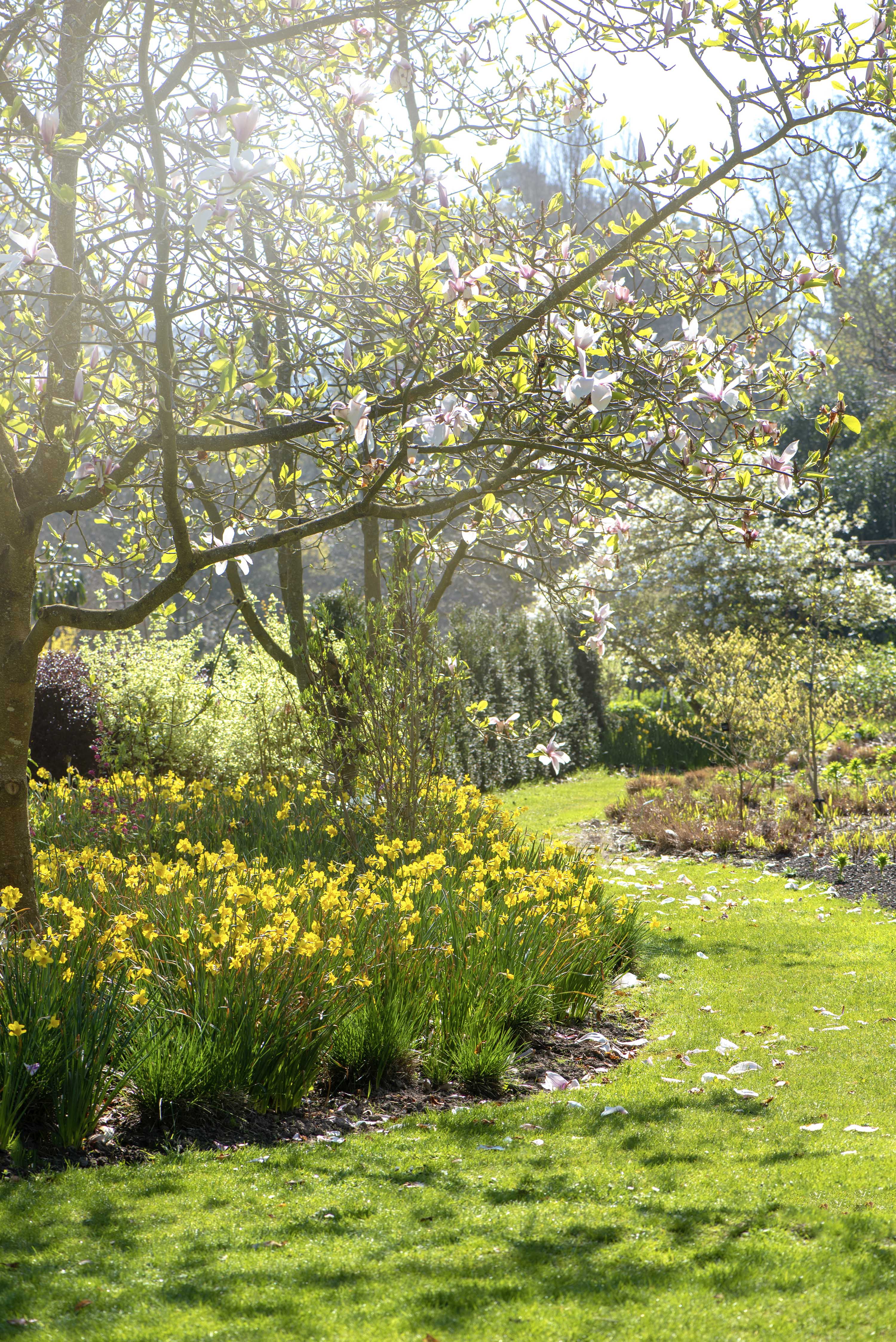
Get your lawn looking lush this season
7 spring lawn care tips for a healthy stretch of green in your garden
Welcome in the new season with these spring lawn care tips – your garden's grass will be looking beautiful in no time.
1. Give it a rake (but gently)
The turbulent weather of winter can cause leaves, twigs, and all other kinds of debris to fall onto your lawn. So, to kickstart its spruce-up, grab your best garden rake and clear it all up, so you're just left with the grass.
Then, you might want to think about scarification. This is the process of working through the lawn to remove organic matter that can undermine its health.
You may have already learned how to scarify a lawn back in the fall. But, if it needs it, there's no harm in doing it again, albeit with a lighter touch. However, it's important to only do so when the grass is back into its growing phase and the soil is warm. This will ensure it recovers properly in time for summer. It's also a good idea to give your lawn a mow, first – this will remove as much initial debris as possible.
But how can you tell if your grass needs scarifying? Well, RHS turf expert Nigel Downs shares his advice. He explains how you should start by taking a good look at your grass. If you can't see the soil, there's probably a build-up of thatch or moss that needs removing. Use a metal grass rake to do this and the improved air circulation and water filtration will lead to much healthier turf.
'Although it seems like a way to thin out the lawn, it will in fact come back denser,' says David Hedges Gower, the Chairman of the Lawn Association.
'Once the lawn has been scarified, it can often lead to a thinner sward for a time and can bring out moss plants. Adding a moss control product directly after scarifying will allow those plants to dehydrate and die off,' he says.
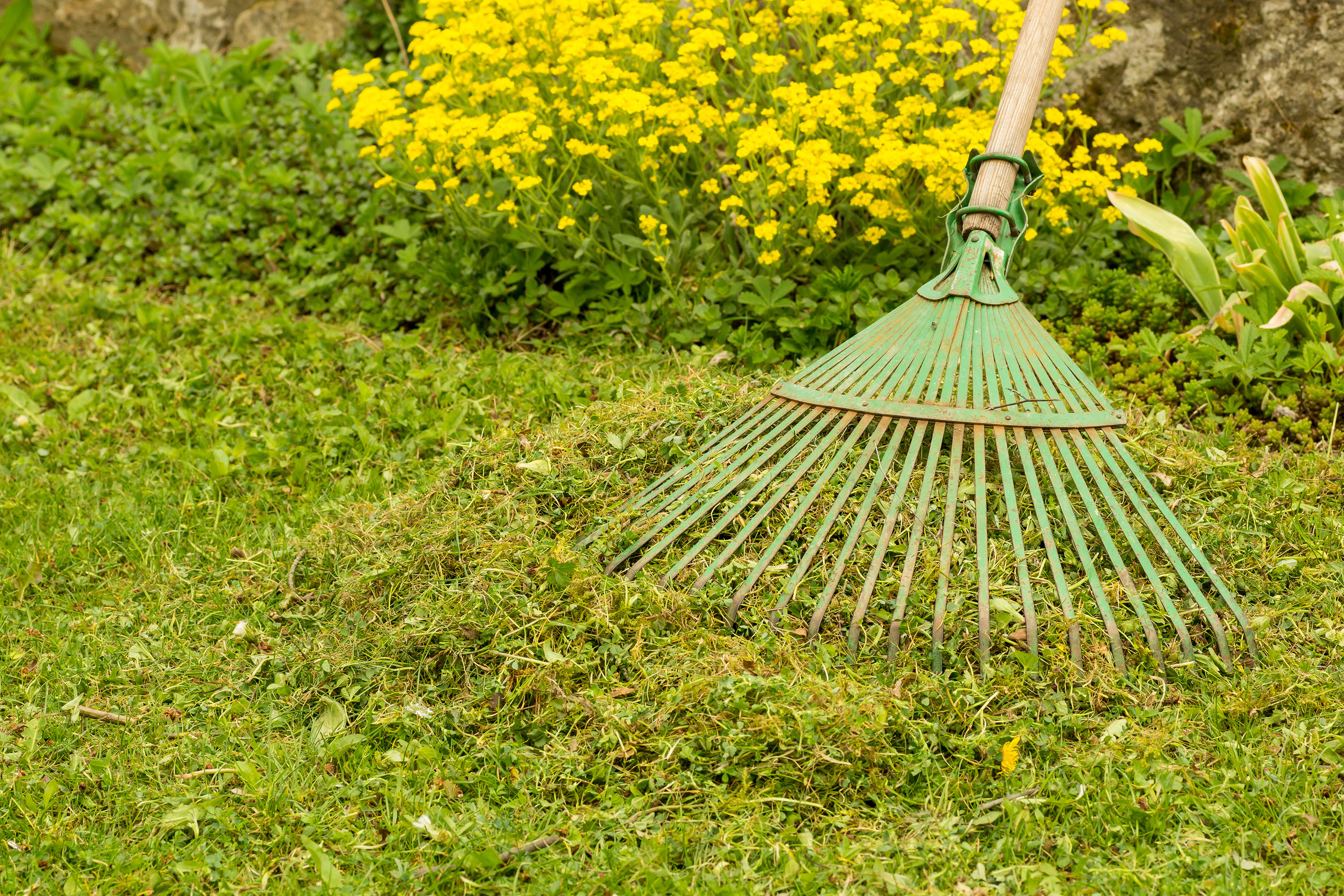
Use a garden rake to clear up winter debris and to lightly remove moss or thatch
2. Take your lawn mower for a spin
Your trusty cordless lawn mower (or maybe you've opted for one of our low-maintenance best robot lawn mowers) has most likely been out of action over winter. But once spring arrives, it's time to dust off the cobwebs and wheel it back out of the shed, ready for the first mow of the season. But, before you let it loose, there are a few top tricks to bear in mind.
According to the RHS, your first mow of the year should be done using the highest setting – you can then gradually decrease this over time. The team at Homebase adds that a good rule-of-thumb is to never cut more than one-third of the length at a time. The RHS also says to never mow when it is frosty or damp. Doing so can compact the soil and damage the grass.
It's also important to ensure your lawn mower has a sharp blade. This will also prevent damage to the turf and help the lawn's uptake of nutrients and water.
After a bit more guidance? You can find lots of in-depth advice on how to mow a lawn in our dedicated feature.
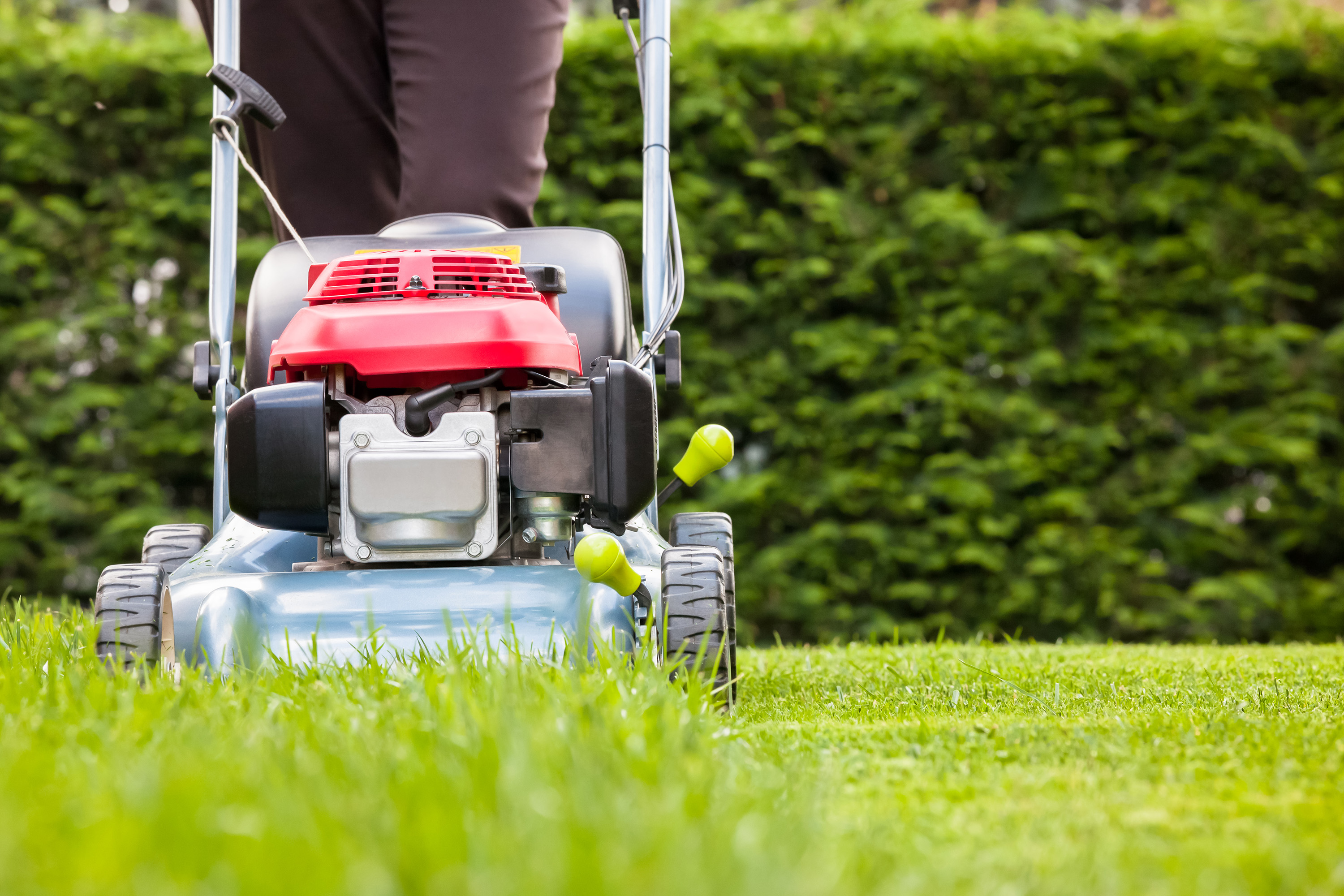
Give your lawn its first cut of the year
3. Neaten up the edges
Re-shaping lawn edges should also be on your list of spring lawn care tips to try. Getting rid of straggly, overgrown lines will make your turf look so much smarter, and it's really straightforward to do. All you need is an edging iron tool, or, if you don't want to remove any of the edge itself, a pair of lawn shears.
Fancy expanding your borders or flower beds while you're at it? Simply cut new shapes with your edging tool as required. One of David's top tips is to use a hosepipe on the ground (in the designated shape) as a template for a neat result.
And once you've got things back in order, why not go the extra mile and add some lawn edging ideas? They're a fabulous way to get an instant spring lawn update. And, they will make maintenance easier too, especially alongside flower beds or pathways, as will keep materials such as gravel and mulch in their proper places.

Use lawn shears or an edging tool to neaten up the borders
4. Get aerating
Nigel Downs explains how aeration is an important part of boosting a lawn's health.
Learning how to aerate a lawn is easy. Simply push a garden fork into the ground, all the way in, and then gently lean it backward before pulling it out again. Move backward 3-4 inches and repeat, all the way up and down your plot. This encourages oxygen to flow and improves root growth, leading to a lusher and more resilient lawn.
Nigel continues to explain that you can follow the aeration with a layer of top dressing. Start by sprinkling soil, compost, or sand (depending on the conditions of your plot) over the lawn. For example, if you're working with heavy clay, then incorporating a sandy top dressing will improve its drainage. Unsure of the conditions of your garden? Our guide to soil types will help.
Then, using a rubber rake or broom, gently work this top layer into the existing soil. Be careful not to use too much, Nigel advises, or it might smother the grass. He adds that you can also top dress a lawn without aerating first – simply use a little less.
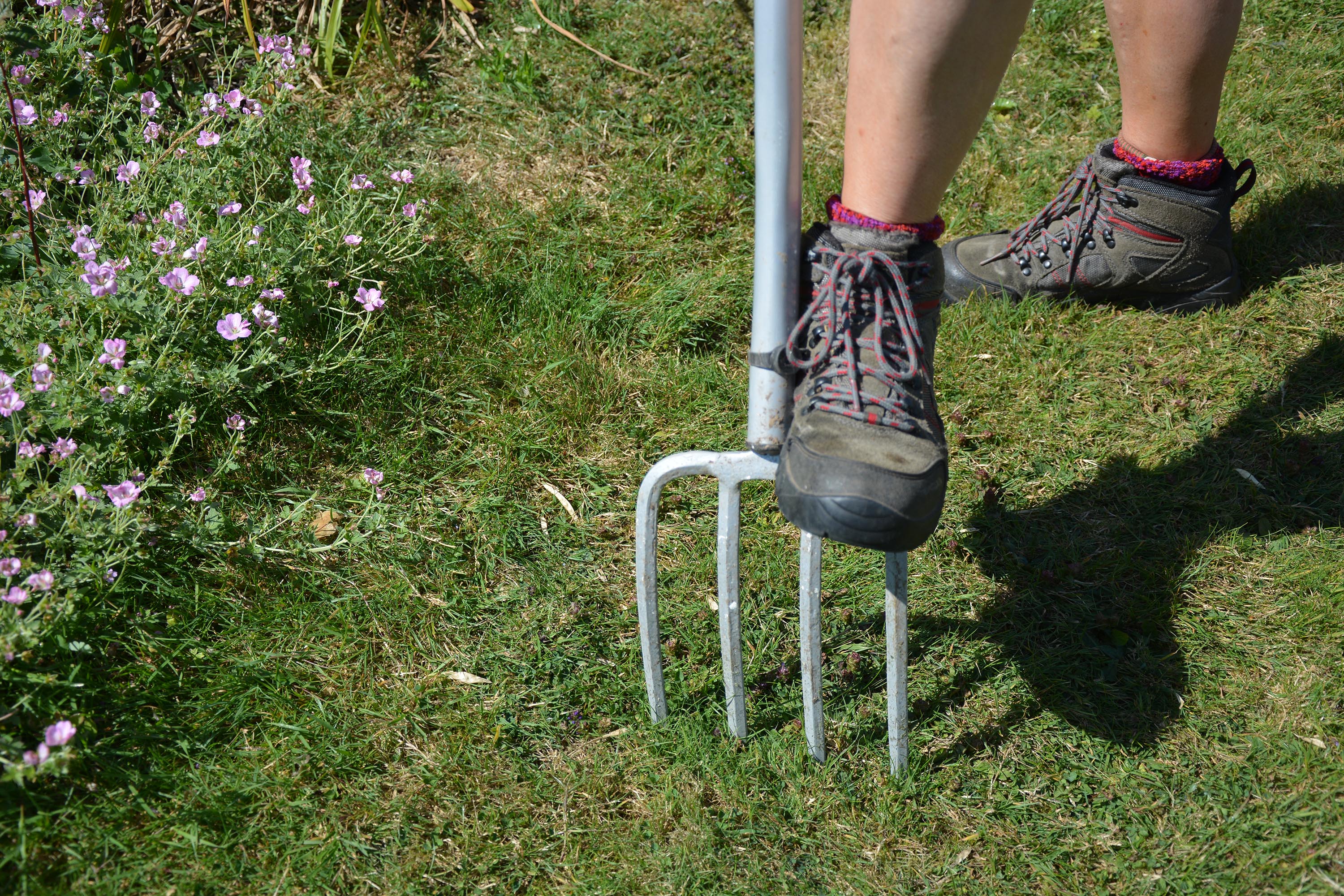
All you need is a garden fork to aerate your lawn in spring
5. Nourish your turf
Many people choose to use a fertilizer on their lawn in spring, to increase growth, and reduce weeds and moss. Use a product designed for spring and summer use and follow the application instructions. It's best to apply most fertilizers when the soil is moist, or when rain is expected, advises the RHS.
If your spring lawn is looking a little threadbare, you might also want to give it a boost with some extra grass seeds – a process known as over-seeding. Nigel Downs says how you can either add seeds to your top dressing, or add it to your lawn just before. Aim for approximately 30–40g per 10.8 sq ft (1 sq m) for verdant results.
If no rain is forecasted for a few days, the RHS suggests gently watering the seed using a sprinkler. It should begin to sprout between seven to ten days later. And if birds are a problem? Protect the lawn with a net, until the seeds have germinated.

Spring is the time to add fertilizer, or to over-seed
6. Repair bald patches of your lawn
If you have very obvious bald patches on your lawn, don't worry – they can be easily fixed.
You can simply sow more grass seed – 'Try where possible to use the same grass species as you already have in your lawn,' says David. For an even quicker fix, lay new portions of turf.
Our guide on how to repair lawn patches has all the in-depth advice you need.
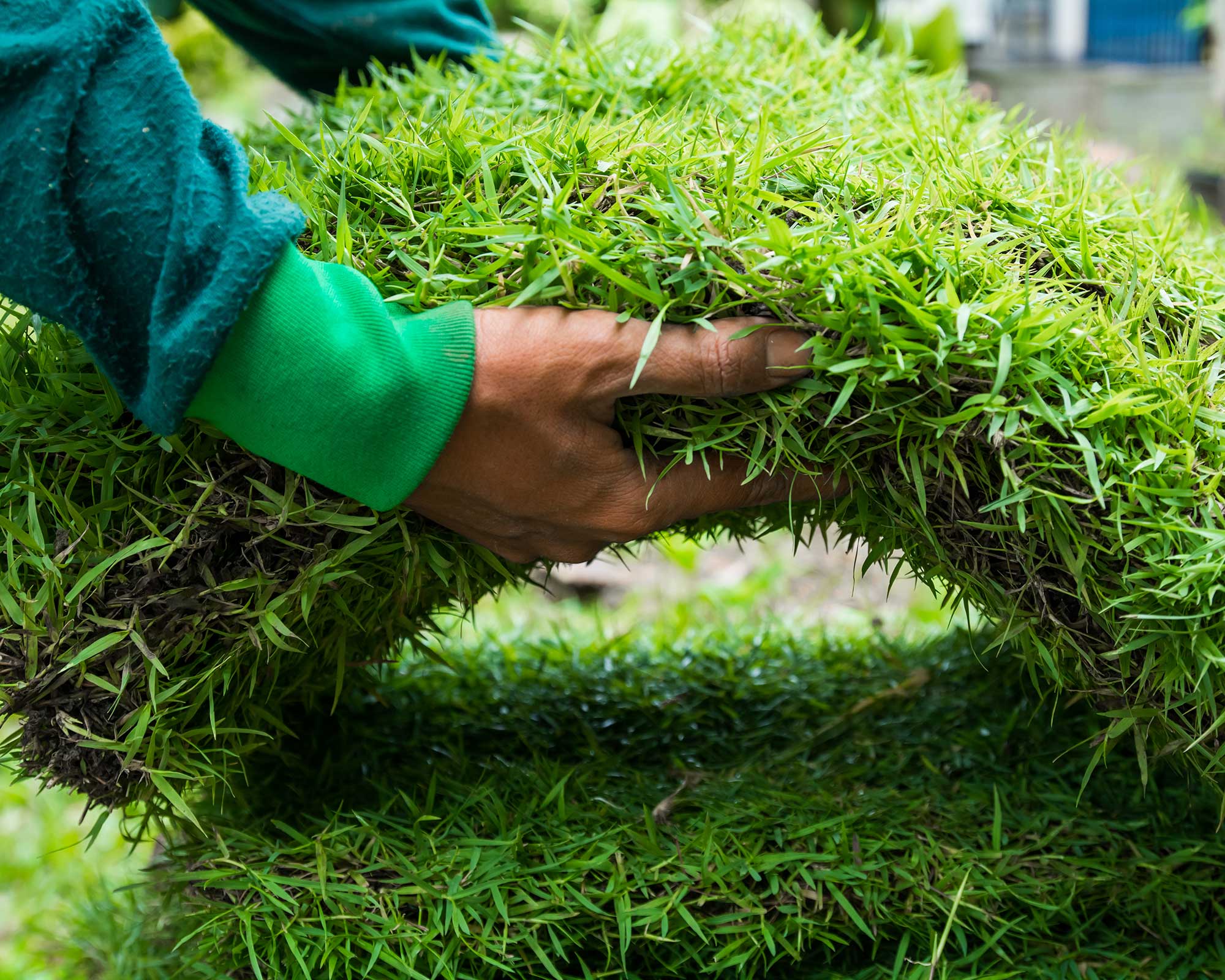
You can replace bare patches with new turf for a quick fix
7. Water the grass (if necessary)
Of course, every lawn needs water. In summer, this is especially important – no one wants a dry, yellowing patch of turf on their plot, so a garden sprinkler will come in handy. However, in spring, the intermittent showers generally take care of things, so you don't have to.
As the team at Homebase says, water only if necessary. And, when you do, it's best to stick to mornings or evenings – the midday sun will cause the water to evaporate.

Use a sprinkler during particularly dry spring spells
When should you start preparing your lawn for spring?
The best time to start preparing your lawn for spring is when any risk of frost has passed. In the UK, this tends to be around late March to early April, but it does depend on your region.
Wherever you are in the world, you just need to make sure that the soil has warmed and the grass is out of dormancy and back into growing mode. This means that it should recover quickly from any treatment and bounce back looking greener and lusher than ever.
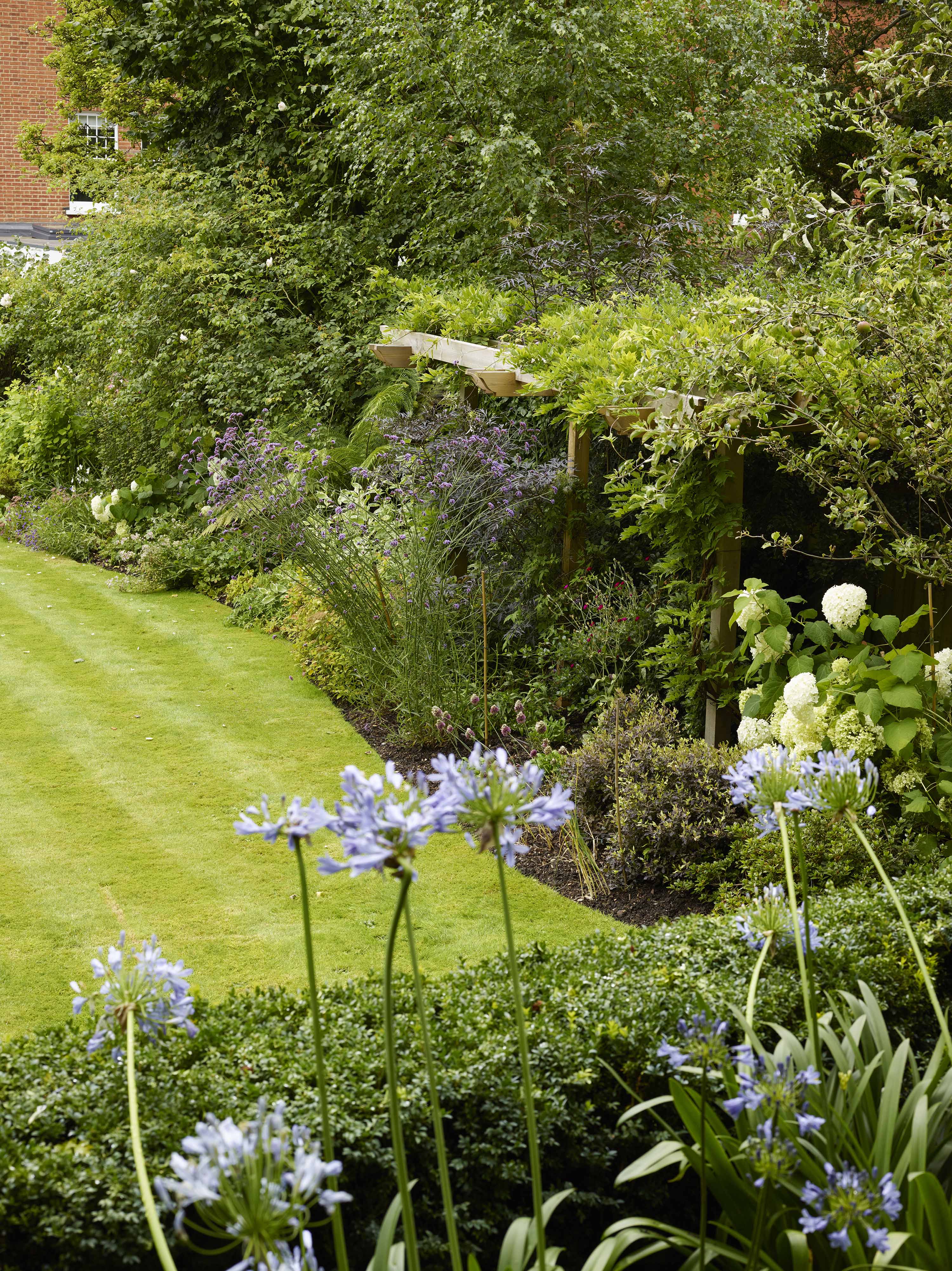
Spring lawn care should begin once the soil has warmed
Should you tackle lawn weeds in spring?
To get rid of lawn weeds, apply a combined fertilizer, weed killer, and moss killer in mid-spring.
If you would rather not use moss killers and herbicides, apply 4oz (112g) per sq m of blood, fish and bone mix monthly, from mid-spring to late summer if rain isn't expected for two days, advises John Negus, gardening expert for Amateur Gardening. 'This encourages grass to grow robustly and outpace the moss and weeds.'
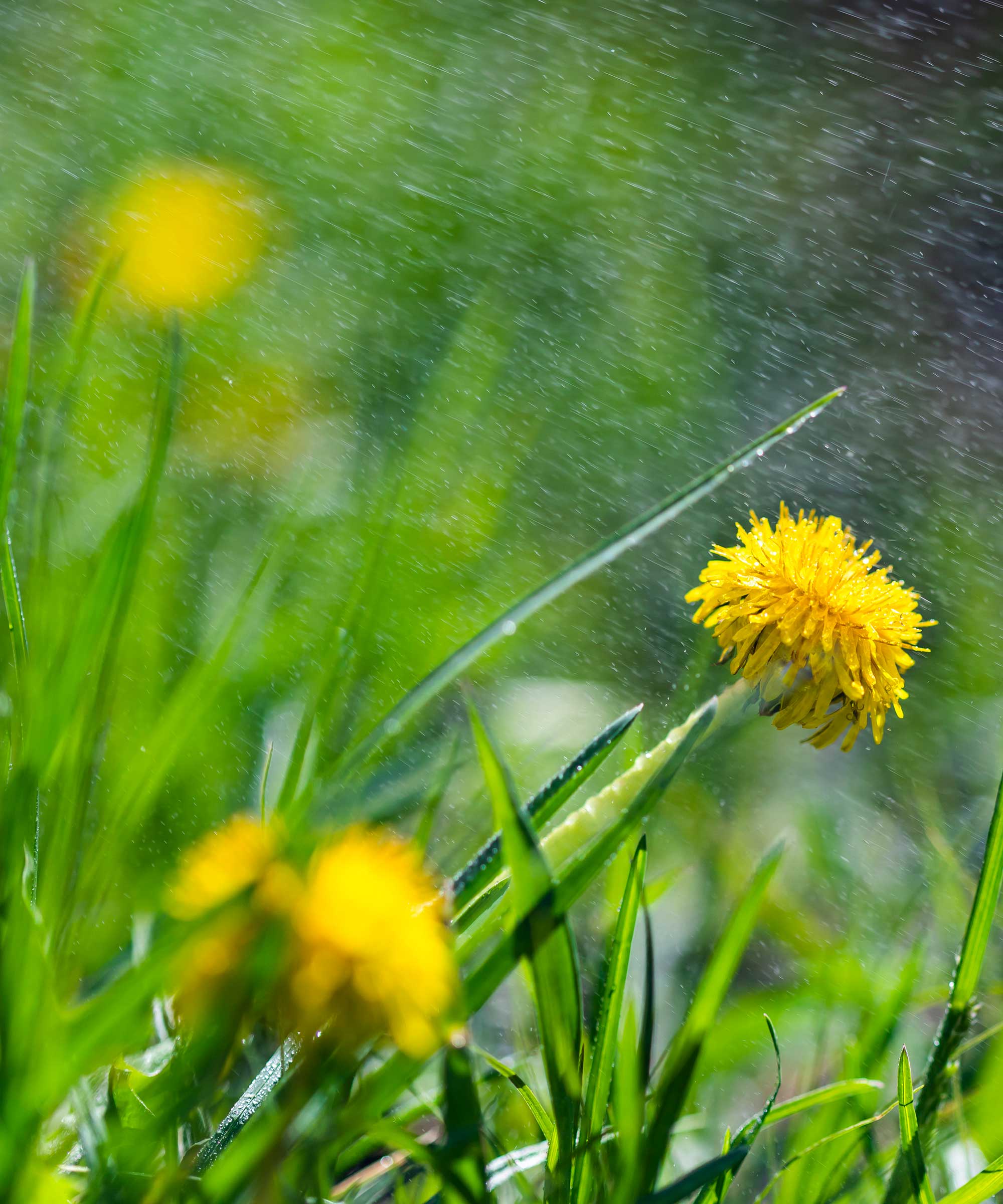
There are steps you can take to combat weeds in your lawn
What time of day is best to fertilize a lawn in spring?
The best time of day to fertilize a lawn is generally the early evening. Lawn fertilizer can be strong stuff, and if applied when the sun is high in the sky and air temperatures are hot, it can begin to burn and scorch your grass.
By applying it in the evening, you'll also have more chance that the grass will be dry (rather than covered in morning dew). This is good for fertilizers that need to be applied on dry grass, but some actually work best on wet grass, so always check the label first. Most products then require watering in after they've been applied – but again, check your product's instructions.
A final note is to add fertilizer after mowing – this gives the fertilizer time to really do its job in between cuts.
How often should you mow your lawn in spring?
The RHS advises mowing around once a week throughout spring. This will result in a neat, traditional patch of turf.
However, you may wish to go for a longer, informal look as part of your wildlife garden ideas. If that's the case, hold off mowing altogether until summer.

The garden was always a big part of Holly's life growing up, as was the surrounding New Forest where she lived. Her appreciation for the great outdoors has only grown since then. She's been an allotment keeper, a professional gardener, and a botanical illustrator – plants are her passion.
